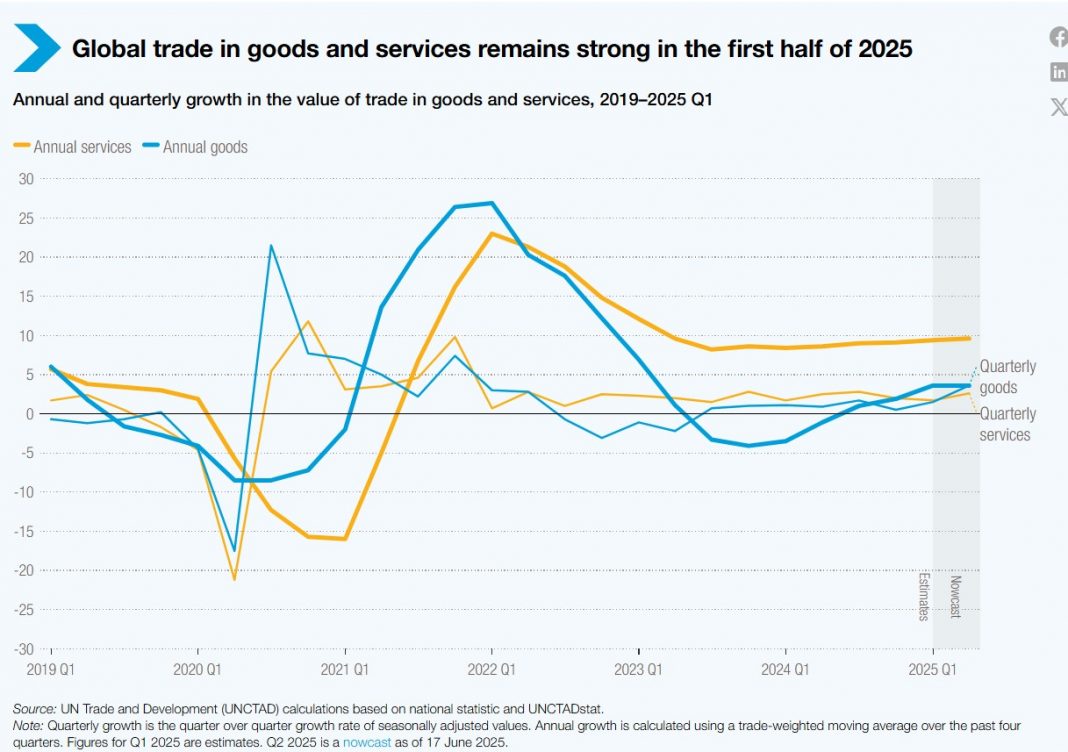Global trade expanded by an estimated $300 billion in the first half of 2025, despite a slower pace of growth, according to the latest Global Trade Update released today by UN Trade and Development (UNCTAD). This growth represents a 1.5% rise in the first quarter, accelerating to an expected 2% in the second quarter.
Trade in services continues to be the primary driver of this expansion, increasing by 9% over the past four quarters. While price increases contributed to the overall rise in trade value, global trade volumes grew by a modest 1%.
Developed Economies Regain Trade Lead
A notable shift in the first quarter of 2025 saw developed economies outpace developing countries in trade growth. This reverses recent trends that favored the Global South and was largely driven by a significant 14% surge in United States imports and a 6% jump in European Union exports.
In contrast, developing countries experienced a 2% drop in imports, and South-South trade stagnated overall. However, Africa bucked this trend, with exports increasing by 5% and intraregional trade growing by a remarkable 16% year-on-year.
Widening Global Trade Imbalances
The report highlights a deepening of trade imbalances over the last four quarters. The United States recorded a larger trade deficit, while China and the European Union saw growing surpluses. Bilateral trade gaps also widened, with the US facing significant annual deficits with key partners including China ($360 billion), the EU ($276 billion), and Vietnam ($116 billion).
Mounting Headwinds and Future Outlook
UNCTAD warns that global trade faces mounting headwinds in the second half of 2025. Persistent policy uncertainty, escalating geopolitical tensions, and signs of slowing global growth are all contributing factors.
New US tariffs, including a 10% baseline rate and additional duties on steel and aluminum, have elevated the risk of trade fragmentation. While retaliatory measures have been limited so far, a further wave of unilateral actions could trigger escalation, impacting third-party countries and destabilizing global supply chains.
Additionally, an expected intensification of domestic subsidies and inward-looking industrial policies, particularly in strategic and high-tech sectors, risks disrupting deeply integrated production networks.
Despite these challenges, signs of resilience remain. Freight indices have rebounded from early-2025 lows, regional integration is strengthening, and services trade is expected to continue its robust growth.
UNCTAD concludes that continued resilience in the second half of 2025 will hinge on “policy clarity, geoeconomic developments, and supply chain adaptability.”




